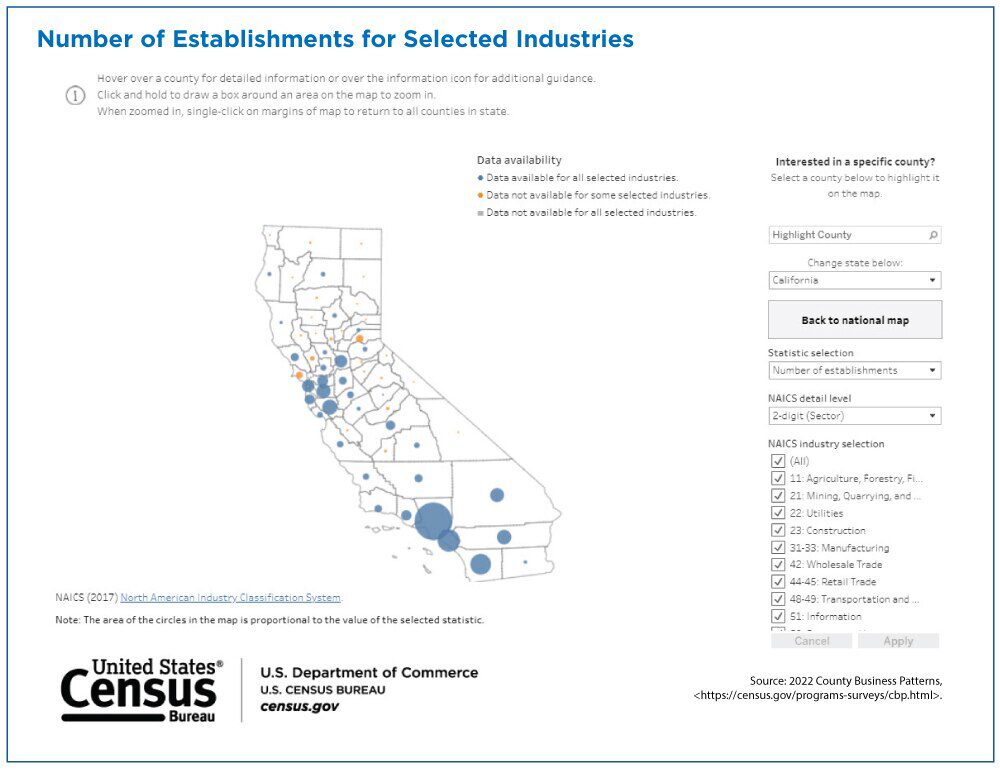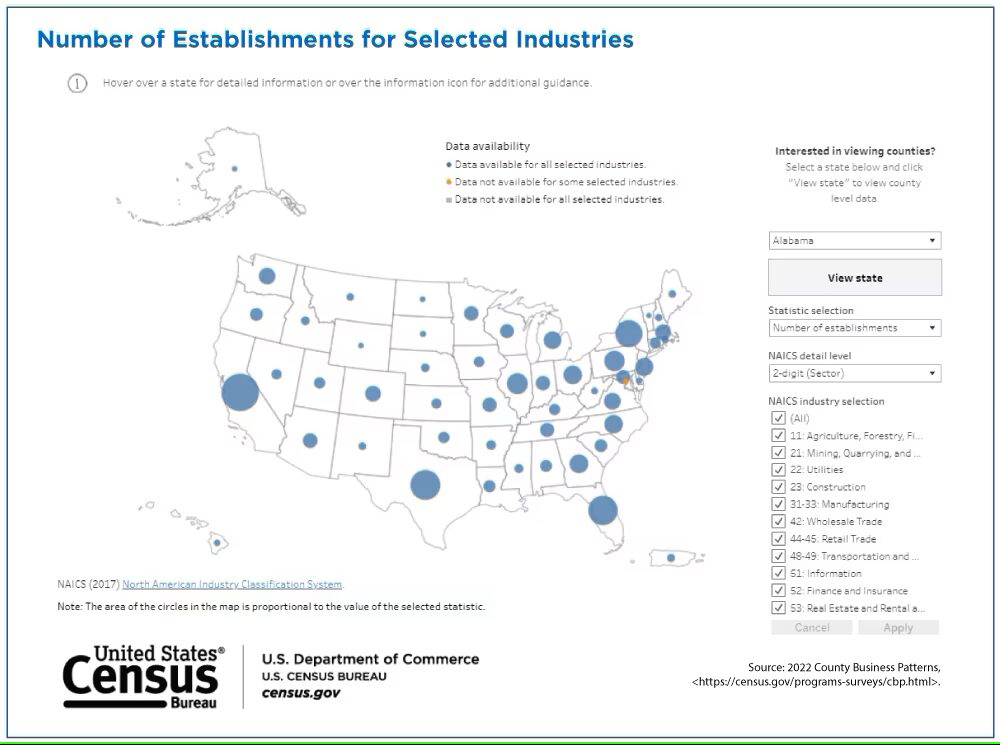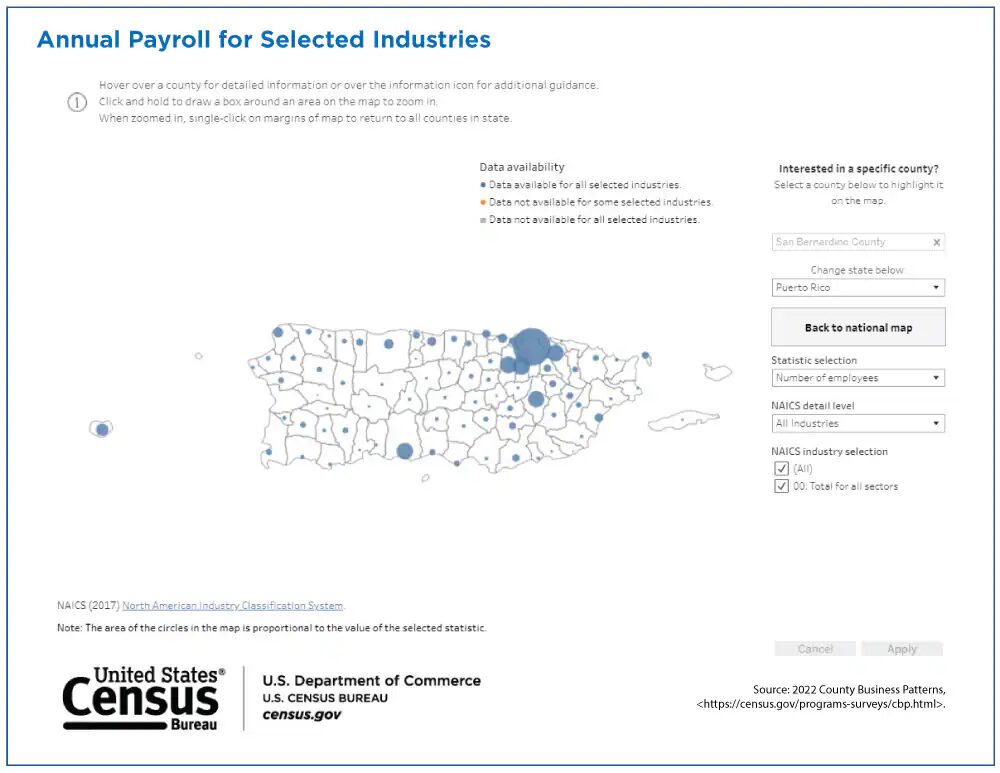


Business leaders in Porto Rico seem to be the most optimistic in the latest business survey and Outlook survey by the US Census Bureau.
Photo of San Juan by Jacob Boomsma: Getty Images
It is time for another chapter in the Snapshot case case selection series in the SH.BA Registration Bureau data groups useful for location decision making.
As a delay in your direct flow, it can sometimes take a time for large data data to reach today. But even with a little delay, eventually a clearer picture appears. Some are from a few years back. But others – like Bivara Business Trends and Outlook (BTO) survey that includes findings from Naics Code for all states and 25 most populous areas of subway – are as fresh as last month, including knowledge of home.
The latest BTOs from February show that the strongest sectors of the country are finances and insurance; educational services; health care; arts and entertainment; and professional services.
Which of those 25 meters have businesses that see the most the chance of an increase in the number of employees over the next six months? Portland, Oregon; San Diego, California; Minneapolis-St. Paul, Minnesota; Seattle, Washington; And Charlotte, North Carolina, seem to have the most sunlight.
Downloading full survey response from those 25 MSA allows ranking by response level. Sometimes the answers are a mixed bag: nineteen percent of Charlotte business respondents had seen an increase in demand for their products and services over the previous two weeks, but just over 20% saw a landing.
The strongest answers to the latest poll have to do with businesses affected by weather events, including Hurricane damage in Tampa; snow or blizzards in the region of the country’s capital, Dallas-rest Worth, Atlanta and Portland; and fires in Los Angeles. (In particular, the percentage of businesses that cited monetary losses from snow in Denver, where they were used to such things, was much lower than in places such as Washington, DC and Atlanta.)
Asked if they envisioned to use it in the production of goods or services in the next six months, the highest levels of “Yes” response came from Denver, San Francisco, Seattle, Miami and San Diego.


Explorers of Census Bureau County Business Models Models can choose a state and compare statistics between circuits.
The infectious courtesy of the US Census Bureau
According to the state or territory, required to describe the current business performance, the highest percentage of “excellent” responded from Puerto Rico, to 24.9%, a continuation of positive estimates returning for several months. Mississippi and Nebraska had the most positive respondents for “above average”. Asked to assess how their number of employees will have changed six months from now, more than 20%of employers in Alaska (27.8%), New Hampshire (27%), Wyoming (24.8%), Tennesses (22.5%) and South Dakota (21.8%) predicted an increase. Moreover, over 35% of respondents in Wyoming, New Hampshire and Alaska provide for the increase in demand for their products or services in the next six months.
States with the highest percentage of business leaders responding “yes” if any paid employee worked from home during the previous two weeks were led by DC (64.7%), Colorado (39.9%), Maryland (39.4%), Minnesota (38.5%) and Washington (36.6%).
As for the data groups that looked further in time, in December the Bureau issued new national, state and local economic data from the 2022 economic census. For the first time, geographical zone statistics were made available in a single release – any sector and geography at the same time. In addition to sectors such as production; Mines, quarries and oil and gas extraction; And finances and insurance, data issuance also included measurements of the subsector of the agriculture industry for the first time in 45 years.
“These statistics offer the standard for industry and economic activity in countries, circuits and local areas used for economic development and regional planning, business location and investment decisions, and the development of informed policies,” said Nick Orsini, Associate Director for Economic Programs in the Registration Bureau. Inadvertently summarizing one of the essential missions of choosing the site, it continued, “Linking industry information to geographical countries across the United States helps us better understand the economic changes that take place within the country.”


Some high line findings:
- In 2022, 8 million employer institutions generated $ 50.5 trillion for sale, hiring $ 136.6 million with $ 8.5 trillion in annual wage lists in the United States.
- “California and Texas were the best countries for the number of institutions, employees, sales and the list of annual wages and the first quarter. Florida, New York and Illinois rounded out the first five states in each of these statistical variables from the economic census of 2022.
- The wholesale sector had the highest value of sales ($ 11.9 trillion) in the country, with 29% of sales coming from California and Texas. “
- “Production was the second largest sector in the country in terms of $ 7.0 trillion shipments. In addition to California and Texas, Ohio, Indiana and Illinois each had over $ 300 billion in value of deliveries from the production sector. “
- “Michigan had 36,176 employees in the production of motor vehicles (Naics 3361), mostly from each country, followed by California (24,163) and Kentucky (23,327).”
This omission followed in October omission of business models for tracking data showing where the most business activity is happening.


Selection of “Annual Payment ($ 1,000)” and “All Industries” for Porto Rico from the Bureau Bureau Business District Data Data revealing that San Juan Commos had the largest annual salary list ($ 7.7 billion) of all municipalities.